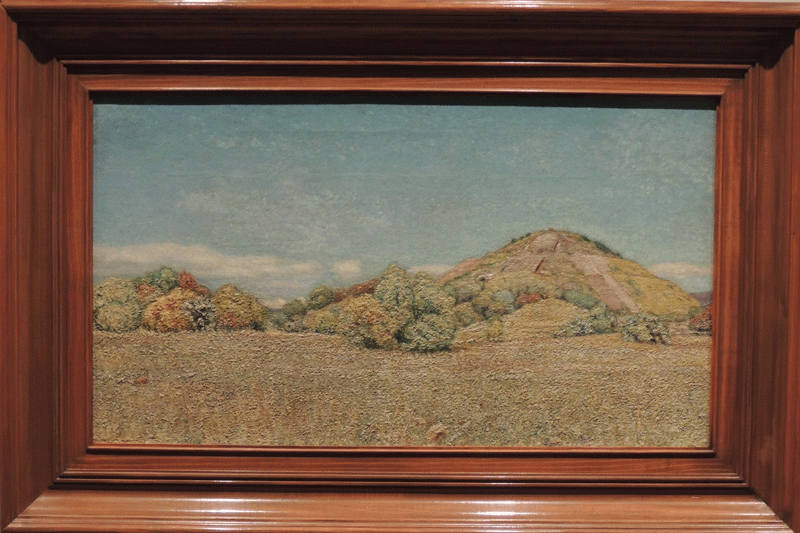Source: WTL photograph© at the Special Exhibition of "Paint the Revolution: Mexican Modernism 1910 - 1950," at the Philadelphia Museum of Art, December 13, 2016.
Image:
"Pyramid, Teotihuacan" (1917-21), by Francisco Goitia [Francisco Bollaín y Goitia García] (1882-1960). Oil on canvas. For a tour of the Teotihuacan archeological site in this textbook, see: => Teotihuacan.
Comments: Goitia was a rather retiring (i.e., shy, somewhat eccentric, and relatively removed from the Mexican political scene). A native of the northern Mexican state of Zacatecas, when he was 16 he studied briefly in the fine arts academy of San Carlos in Mexico City; however, wanting to free himself from strick academic training, he went to Barcelona, France, and Italy, in which places he discovered the new, modern, European painting. Returning to Mexico in 1912, he joined Francisco Villa's revolutionary Army of the North and painted the scenes of violence and misery resulting from the fighting. When Villa's army was defeated in 1915, he returned to Mexico City, where he was commissioned by Mexican archeologist and anthropologist Manuel Gamio to paint scence of Mexican ruins and indigenous cultures. This canvas is one of those works. Even in this photograph you can see the impasto style in which, in the bottom half of the painting, he laid the paint on so thickly that it stands out from the background. Toward the end of his life he retired to the capital's suburb of Xochimilco while continuing to produce a variety of works of art.
Humanities Question: After reviewing the (recent) images of Teotihuacan (see link above), and while taking into consideration Goitia's works prepared for the archeologist Gamio, compare and contrast this ("modern") painting with the photographs of the same pyramid and site.


